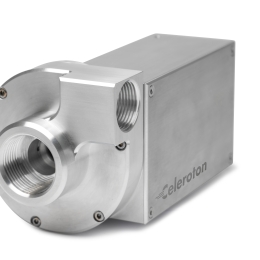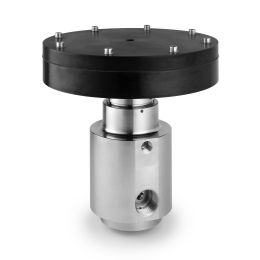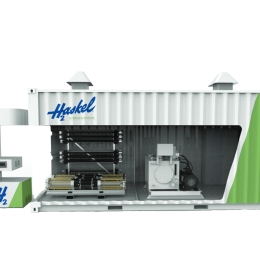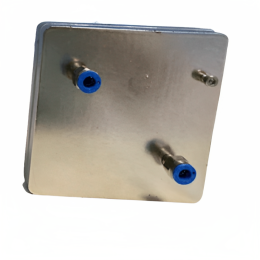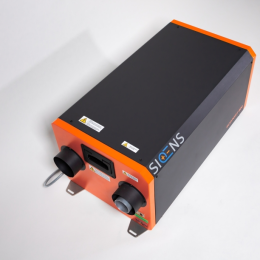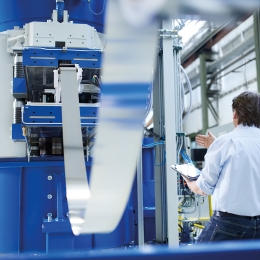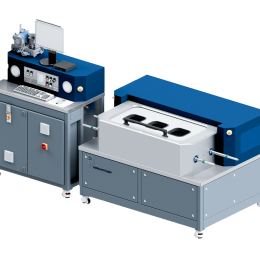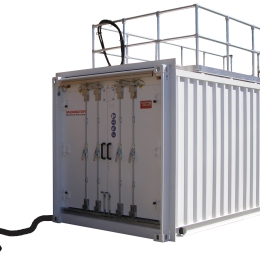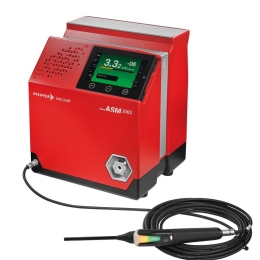- What is the main purpose of the technology readiness level?
- Why is the technology readiness Level so important for hydrogen systems and fuel cell components in the hydrogen economy?
- What is the meaning of a technology readiness level of 9 (TRL 9)?
- What is the significance of a technology readiness level of 8 (TRL 8)?
- What is indicated by a technology readiness level of 7 (TRL 7)?
- What is inferred by a technology readiness level of 6 (TRL 6)?
- How does a technology readiness level of 5 or below compare?
- Further information is available at the resources listed below:
What is the main purpose of the technology readiness level?
The technology readiness Level is commonly used to describe the maturity of development for a specific product. An engineered product is generally developed in different phases, starting from rapid prototyping towards readiness for series production. In order to speak the same language across industries and verticals, a ratings system of several levels has been defined, in order to assess the technology readiness Level of products. All products on the Hyfindr marketplace are categorized by their TRL level – and a product search can be filtered accordingly.
Why is the technology readiness Level so important for hydrogen systems and fuel cell components in the hydrogen economy?
The greater variety of products manufactured for the hydrogen industry are not yet produced in economies of scale generally found in other segments of the energy economy. Fuel cell engines and the components required to build modern hydrogen systems are not yet in the same league with the production volumes of conventional internal combustion engines or battery systems.
Given this state of affairs, it is of utmost importance for systems engineers to know the maturity level of products being integrated into their systems – both in terms of the development level and the manufacturing level.
In an ideal scenario, one would design a fuel cell or hydrogen system that only includes components with a technology readiness Level of 9 (TRL 9) and a manufacturing readiness level of 10 (MRL 10). This would mean that the system being designed, despite in and by itself not yet meeting any such criteria, would at least feature integrated components and technology which has been tested in the designated operational environment and is manufactured in series, and using lean production processes.
This allows engineers and system designers to focus on improving the quality of the newly designed system. With TRL levels already established for integrated components, testing of that new system becomes much easier in terms of root cause analysis, so as to iron out any technical issues.
Some hydrogen system components can be adapted from other energy system domains, but the closer one gets towards the fuel cell, the fewer components may be repurposed, while still offering ratings of TRL 9, and MRL 10. To make it easy for systems engineers and purchasing professionals to identify the suitability of a given product, all products in the Hyfindr marketplace are listed with their respective maturity level, both relating to development (TRL), and production (MRL) criteria. Suppliers listing their products on the Hyfindr marketplace commit to keeping such criteria up to date.
What is the meaning of a technology readiness level of 9 (TRL 9)?
A technology readiness level of 9 (TRL 9) generally means that the technology is refined and adopted. An organisation would need to be able to answer all questions below with “YES” in order to deserve this rating:
- Is the technology deployed in its intended operational environment?
- Is information about the technology disseminated to the respective user community?
- Is the technology adopted by the respective user community?
What is the significance of a technology readiness level of 8 (TRL 8)?
A technology readiness Level of 8 (TRL 8) generally means that an engineering product has been proven in its operational environment. An organisation would need to be able to answer all questions below with “YES” in order to deserve this rating:
- Are all system components compatible in terms of form, fitness, and function, both with each other and within the operational environment?
- Has the technology been proven in an operational environment (i.e. compliance with performance targets achieved)?
- Has a rigorous testing and evaluation process been completed successfully?
- Does the technology fulfill its stated purpose and functionality as designed?
What is indicated by a technology readiness level of 7 (TRL 7)?
A technology readiness level of 7 (TRL 7) generally means that a prototype of the product was demonstrated in an operational environment. A manufacturer or supplier would need to be able to answer all questions below with “YES” in order to deserve this rating:
- Are the components available representative of those components used in production?
- Has the fully integrated prototype been demonstrated in an operational environment (i.e. real-world conditions, including the user community)?
- Have all interfaces been individually tested, under stressed and anomalous conditions?
What is inferred by a technology readiness level of 6 (TRL 6)?
A Technology Readiness Level of 6 (TRL 6) generally means that a prototype of the product has been demonstrated in the relevant environment. To comply with this rating, an organisation would need to be able to answer all questions quoted below with “YES”:
- Is the operational environment (i.e. the user community, physical environment, and input data characteristics, as appropriate) fully known?
- Has the prototype been tested in a realistic and relevant environment outside the laboratory?
- Does the prototype satisfy all operational requirements when confronted with problems to be expected in real-life scenarios?
How does a technology readiness level of 5 or below compare?
A Technology Readiness Level of 5 (TRL 5) or less means that the product development has not even reached prototype level. For this reason, this rating, or any lower levels, are not relevant for listings on the Hyfindr marketplace.
Further information is available at the resources listed below:
- Further detailed information on the TRL can be found in the Technology Readiness Level Guidebook publish by the U.S. Department of Transportation.
- Classifications for TRL – Technology Readiness Level – have been defined by convention among several US government agencies involved in providing engineering solutions, most notably Technology Readiness Level DoD (Department of Defense) definitions, and further DoE (Department of Energy), and NASA technology readiness level definitions being the most prominent.
- Answers to the question “What Does TRL Mean?” are also provided succinctly by the renowned TWI Ltd., who also publish a handy Technology Readiness Level chart for easy reference.
Last update: 15.1.2023


